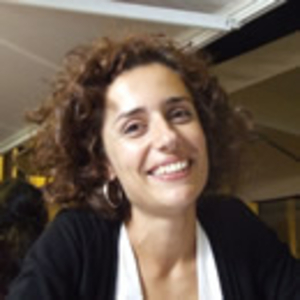Last minute changes to the program
Because two of our speakers (Cally Roper and Daniel Rankin) unfortunately had to cancel their talks, we are adding new talks to the symposium. Originally, when we decided who to invite to talk in the symposium, we each read & graded the submitted abstracts without knowing who the author was. Now that we can accept a few more talks, we are going back to our ranking and invite the people next on the list.
New: Matti Jalasvuori on preventing evolutionary rescue
Matti Jalasvuori from the University of Jyväskylä, is interested in the role of horizontal gene transfer for evolutionary rescue. The question is whether horizontal gene transfer can allow a bacterial strain to survive a lethal dose of antibiotics in the absence of pre-existing variation in the strain itself. Next, he asks whether this process can be prevented by using specific viruses.
New: Samuel Tazzyman will talk about resistance genes on plasmids
Many important resistance genes can move from bacterium to bacterium on plasmids. Samuel Tazzyman from the ETH in Zurich makes models to determine under which conditions plasmids are a favorable location for resistance genes.
New: Laura Pollitt talks about the evolution of clearance rates in Malaria
Artimisinin is the main drug used to treat malaria these days. However, the malaria parasites are evolving artimisinin resistance. This resistance comes in the form of slower clearance rates when treated. Laura Pollitt is looking at the evolution of clearance rates in an experimental system. She also considers the role of mixed infections (with resistant and susceptible parasites) and the dose of the drugs used.
Laura Pollitt works at Pennsylvania State University.
The original post
I am one of the organizers of the drug resistance symposium next week in Lisbon during the ESEB conference. Here is a short preview of the day. Hope to see you there!
The day starts with a plenary talk by Juliette de Meaux about adaptation in Arabidopsis. After the coffee break our symposium starts.
Morning session
10:30 Invited speaker: Craig MacLean on intrinsic resistance
Craig MacLean will talk about why some bacteria are intrinsically more antibiotic resistant then others. He also asks whether this intrinsic resistance helps the bugs to evolve complete resistance.
There is also a poster related to this talk by Victoria Furio and Craig MacLean.
Craig MacLean works at the University of Oxford.
11:18 Alison Hill on drugs characteristics and drug resistance in HIV
 Alison Hill talks about how characteristics of drugs determine the risk that resistance evolves in HIV. She shows how non-adherence (i.e., if patients do not take all prescribed doses) can lead to treatment failure and drug resistance for some drugs, whereas non-adherence leads to treatment failure without drug resistance in other cases.
Alison Hill talks about how characteristics of drugs determine the risk that resistance evolves in HIV. She shows how non-adherence (i.e., if patients do not take all prescribed doses) can lead to treatment failure and drug resistance for some drugs, whereas non-adherence leads to treatment failure without drug resistance in other cases.
Alison Hill recently defended her PhD thesis at Harvard. She is also a co-author of the talk by Stefany Moreno in our symposium.
11:42 Jeremy Dettman on evolution of Pseudomonas aeruginosa in CF patients
Jeremy Dettman will talk about the analysis of Pseudomonas aeruginosa whole genomes from cystic fibrosis (CF) patients. CF patients are often infected with this bug for many years, so that it is likely that the bacterium adapts to the patient environment.
Jeremy Dettman works in Ottawa.
Early-afternoon session
CANCELLED Invited speaker: Cally Roper on the origins and spread of malaria drug resistance

Cally Roper works on drug resistance in malaria. She is interested in the genetics of drug resistance and how different drug resistance mutations spread through Africa. Have a look at her drug resistance geography website here: http://www.drugresistancemaps.org/maps/haplotype/dhfr/
She will also talk about the policy consequences of her work. Cally Roper works in London as a Senior Lecturer at the London School of Hygiene and Tropical Medicine.
14:48 Ana Sousa talks about the fitness effects of resistance mutations
 Ana Sousa looks at the distribution of fitness effects of resistance mutation in environments without drugs. She compares the observed distribution of effects with predictions from a simple fitness landscape model.
Ana Sousa looks at the distribution of fitness effects of resistance mutation in environments without drugs. She compares the observed distribution of effects with predictions from a simple fitness landscape model.
Ana Sousa works in Portugal at the Gulbenkian Institute with Isabel Gordo.
15:12 Alex Hall about bacteriaphage and drug resistance
Alex Hall will talk about how selection pressure by bacteriaphage may change the outcome of competition between drug-resistant and drug-susceptible bacteria. He will describe results from experiments with populations of Escherichia coli in the presence and absence of bacteriaphage.
Mid-afternoon session
15:45 Daniel Rozen from Leiden about killer bugs
Daniel Rozen asks why bacteria produce antibiotics, and whether there is co-evolution happening between antibiotic-producing bacteria and their enemies.
Daniel Rozen is an assistant professor in Leiden. He has previously worked in England, USA (with Richard Lenski) and in Wageningen (with Arjan de Visser, who is also a speaker in our symposium).
16:09 Clara Torres Barceló on the costs and benefits of an SOS response pathway
Clara Torres Barceló looked at the effects of having or not having a particular stress response pathway. She finds that there is a cost of having the pathway when bacteria are grown without antibiotics. She finds no difference in adaptive potential between strains with and without the stress response pathway.
Clara Torres Barceló works in Montpellier, but the work she presents at ESEB was done in Oxford.
16:33 Kristan Schneider on resistance in two malaria species
 Kristan Schneider will talk about why drug resistance evolves faster in one species of malaria (P. falciparum) as compared to another species (P. vivax). He will talk about a modeling approach that focuses on host-to vector transmission and the presence of dormant liver-stage parasites.
Kristan Schneider will talk about why drug resistance evolves faster in one species of malaria (P. falciparum) as compared to another species (P. vivax). He will talk about a modeling approach that focuses on host-to vector transmission and the presence of dormant liver-stage parasites.
Kristan Schneider is a professor in Mittweida, Germany.
CANCELLED Daniel Rankin about resistance to antivirulence drugs
Daniel Rankin asks what would happen if we’d treat bacteria with antivirulence drugs (e.g., drugs that block quorum sensing). The hope is that resistance to these drugs would not evolve. However, he finds that under some conditions, increased virulence may evolve.
Daniel Rankin is at the University of Zurich.
Late-afternoon session
17:45 Arjan de Visser on experimental evolution of an enzyme

Arjan de Visser studies the evolution of a single enzyme in an experimental setting. He is interested in the distribution of fitness effects of new mutations and the epistatic interactions between such mutations. He also looked at the effect of the population size and finds that smaller populations sometimes reach higher levels of resistance.
Arjan de Visser works in Wageningen (NL).
18:09 Stefany Moreno-Gamez about spatial structure and the evolution of drug resistance
Disclaimer: I am one of the co-authors on this talk. (I saw Stefany practice the talk – it’ll be great!)
Stefany Moreno will talk about how bugs (such as HIV and bacteria) can evolve to become resistant to multiple drugs. Specifically, she asks whether drug resistance is more likely to evolve if there are compartments in the patient where only one of the drugs is present. She finds that such compartmentalization makes it much easier for the bug to become multi-drug resistant.
Stefany Moreno is currently finishing up her Master’s Degree in the MEME program in Groningen.
18:33 Adin Ross-Gillespie on quorum quenching

This is the second talk in our symposium about antivirulence drugs. An example of an antivirulence drug, is a drug that blocks communication between bacteria – such drug blocks quorum sensing and the strategy is referred to as “quorum quenching”. Adin Ross-Gillespie will talk about a quorum quenching method in which public goods are quenched outside the producer cells.
Adin Ross Gillespie is a postdoc at the University of Zurich.
18:57 Stéphanie Bedhomme on evolution after horizontal gene tranfer
Resistance genes are often acquired by horizontal gene transfer. Genes that are acquired by horizontal gene transfers are often maladapted to the organism, for example, because they don’t use the preferred codons of the organism. Stéphanie Bedhomme studied what happens (at a genotypic and phenotypic level) to a horizontally transferred and maladapted gene in a new host.
Stéphanie Bedhomme also has a poster on a viral evolution project. She works in Barcelona at the IDIBELL Bellvitge Biomedical Research Institute.
Evening: Poster session
After the talks there will be a poster session. See poster abstracts here: https://www.eseb2013.com/abstracts?symposium=22&type=poster
 Nicole Hawkins writes: “For my poster, I will be presenting an example of resistance in agriculture, in a fungal plant pathogen, with an interesting resistance mechanism in which a second paralogue of the target site, having almost been lost from the population, re-emerged under selection by fungicides. (A nice example of selection from standing variation…)”
Nicole Hawkins writes: “For my poster, I will be presenting an example of resistance in agriculture, in a fungal plant pathogen, with an interesting resistance mechanism in which a second paralogue of the target site, having almost been lost from the population, re-emerged under selection by fungicides. (A nice example of selection from standing variation…)” Yue Wu proposes a model which uses reaction norms to describe the fitness of bacterial strains, depending on genotype (sensitive and resistant) and the environment (drug concentration). Using this model, she studies evolutionary escape in fluctuating environments.
Yue Wu proposes a model which uses reaction norms to describe the fitness of bacterial strains, depending on genotype (sensitive and resistant) and the environment (drug concentration). Using this model, she studies evolutionary escape in fluctuating environments. Malaria infections are often mixed, i.e., containing both drug resistant and drug sensitive strains. Aggressive malaria treatment with high doses of drugs may prevent the de novo evolution of resistance, but such aggressive treatment may not be optimal for mixed infections, because aggressive treatment can make it more likely that already present resistant strains outcompete the wildtype. Nina Wale from Penn State looks at whether reduced nutrient availability can prevent the resistant strains from growing to high numbers and causing disease. She writes that “Compounds that alter the host environment represent a novel, potentially ‘evolution proof’ class of drugs that could be used in combination with existing drugs to slow the evolution of drug resistance.”
Malaria infections are often mixed, i.e., containing both drug resistant and drug sensitive strains. Aggressive malaria treatment with high doses of drugs may prevent the de novo evolution of resistance, but such aggressive treatment may not be optimal for mixed infections, because aggressive treatment can make it more likely that already present resistant strains outcompete the wildtype. Nina Wale from Penn State looks at whether reduced nutrient availability can prevent the resistant strains from growing to high numbers and causing disease. She writes that “Compounds that alter the host environment represent a novel, potentially ‘evolution proof’ class of drugs that could be used in combination with existing drugs to slow the evolution of drug resistance.” Alison Hill talks about how characteristics of drugs determine the risk that resistance evolves in HIV. She shows how non-adherence (i.e., if patients do not take all prescribed doses) can lead to treatment failure and drug resistance for some drugs, whereas non-adherence leads to treatment failure without drug resistance in other cases.
Alison Hill talks about how characteristics of drugs determine the risk that resistance evolves in HIV. She shows how non-adherence (i.e., if patients do not take all prescribed doses) can lead to treatment failure and drug resistance for some drugs, whereas non-adherence leads to treatment failure without drug resistance in other cases.
 Ana Sousa looks at the distribution of fitness effects of resistance mutation in environments without drugs. She compares the observed distribution of effects with predictions from a simple fitness landscape model.
Ana Sousa looks at the distribution of fitness effects of resistance mutation in environments without drugs. She compares the observed distribution of effects with predictions from a simple fitness landscape model.



